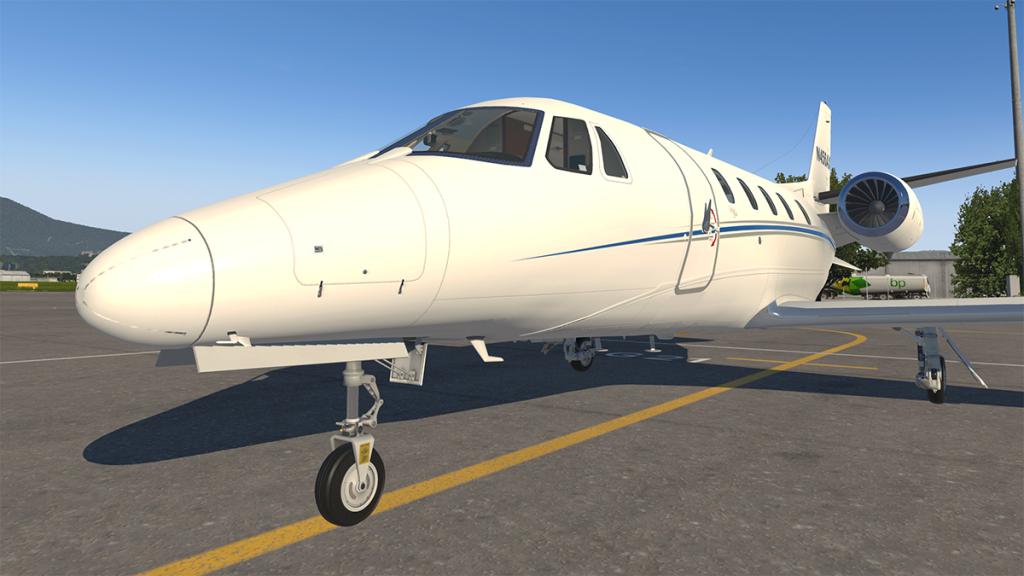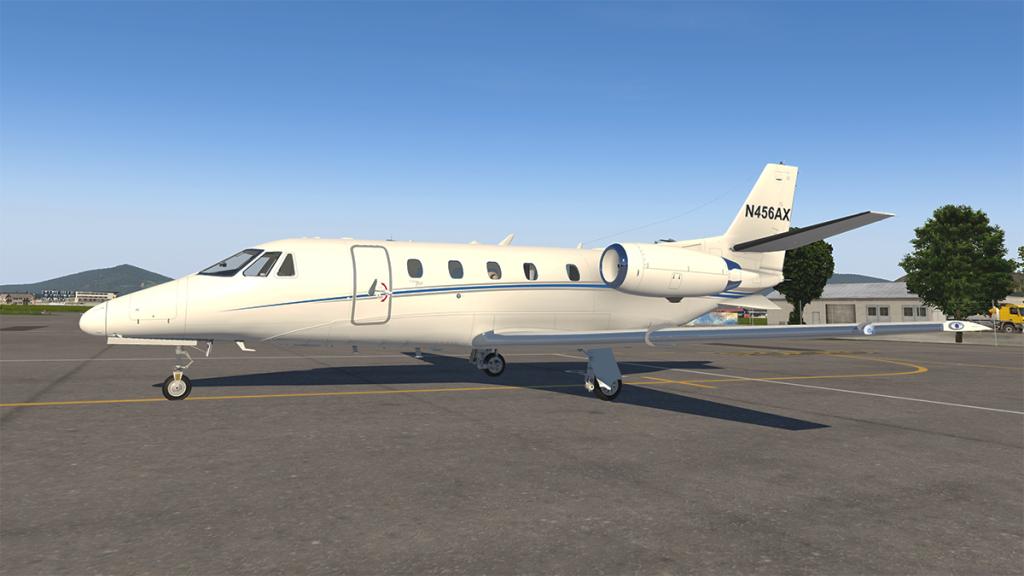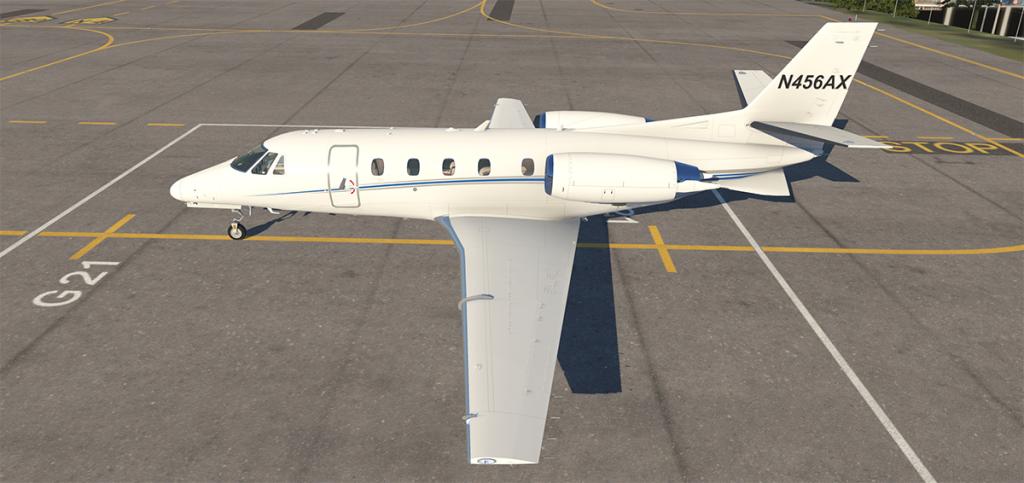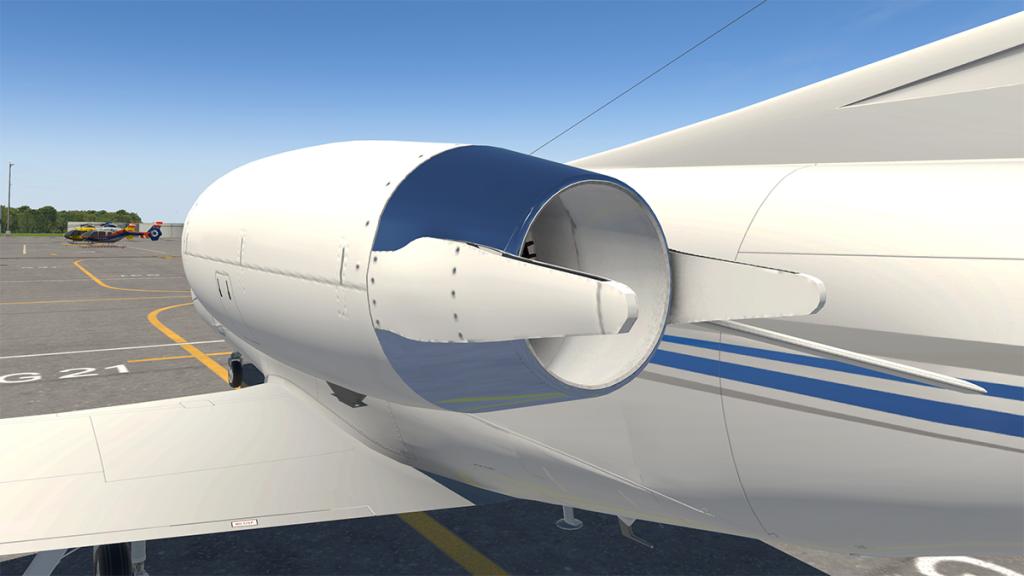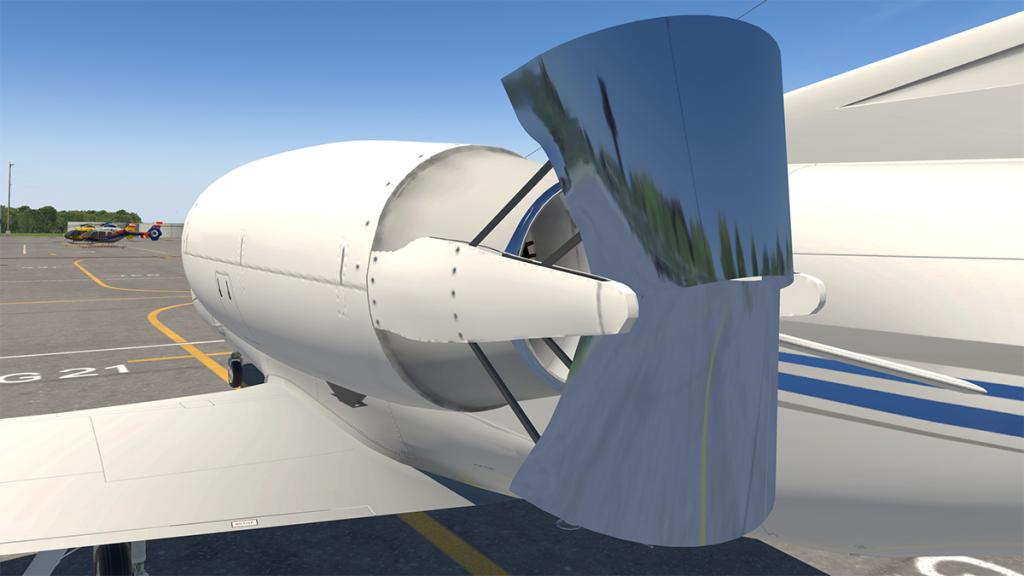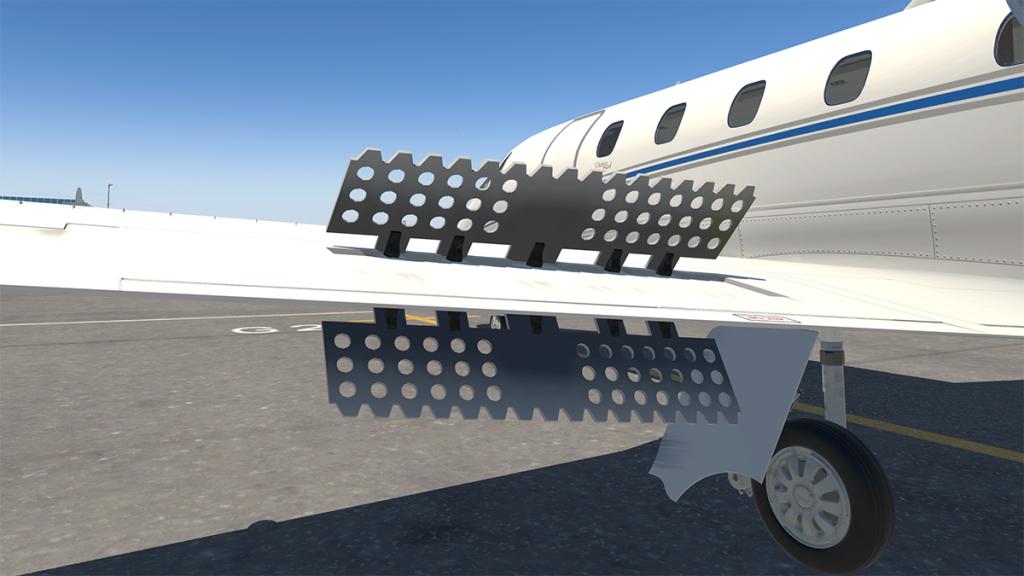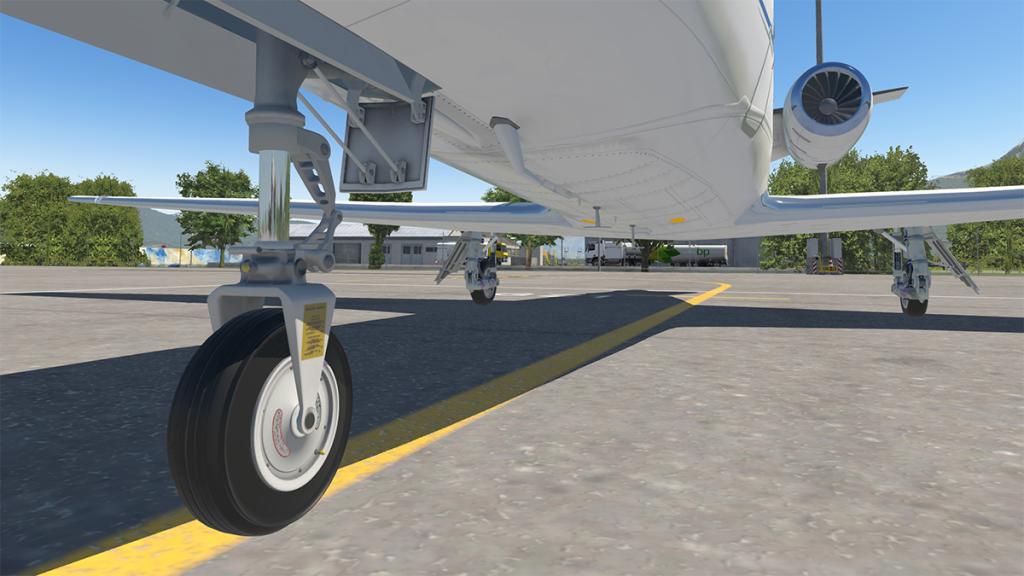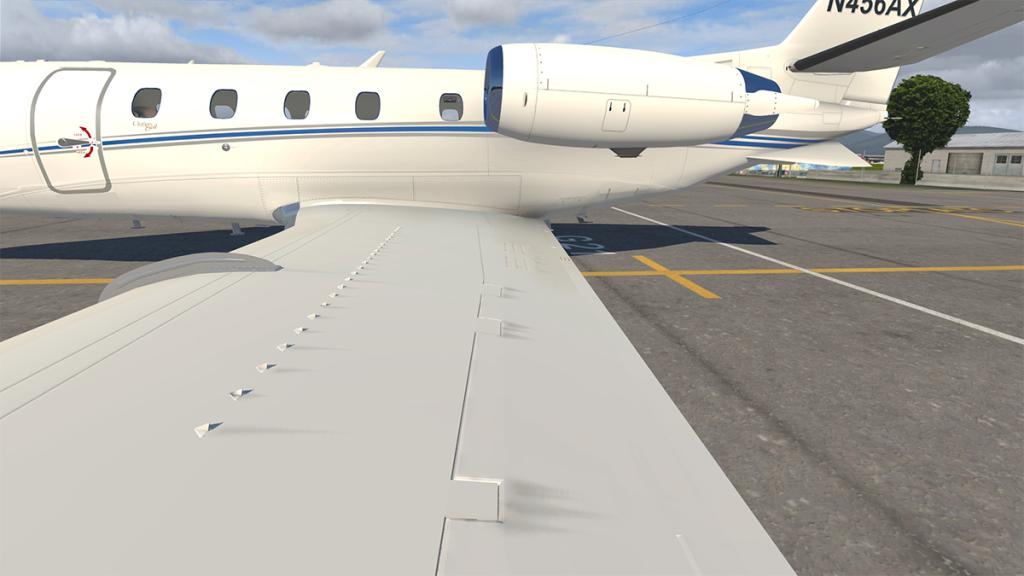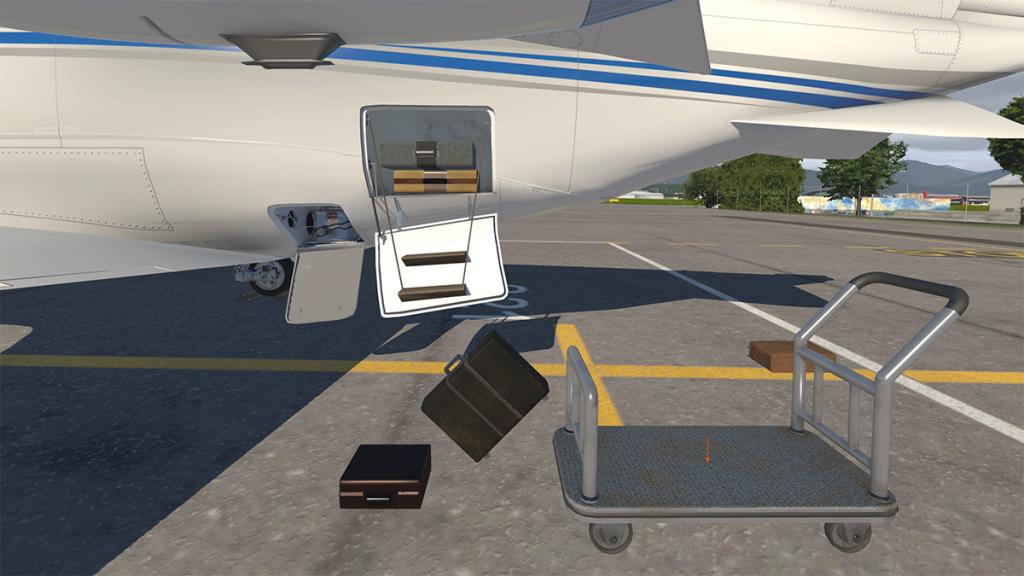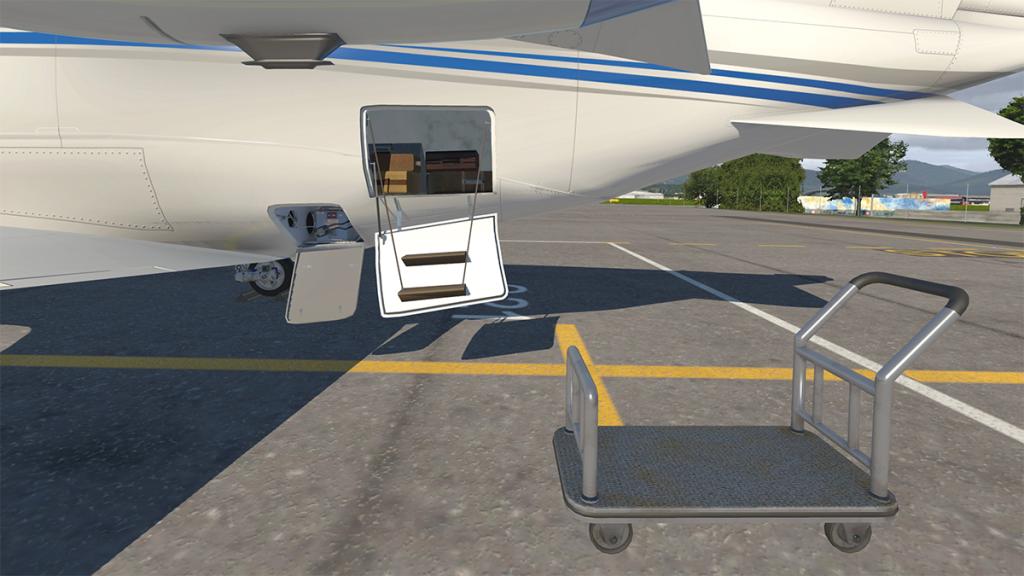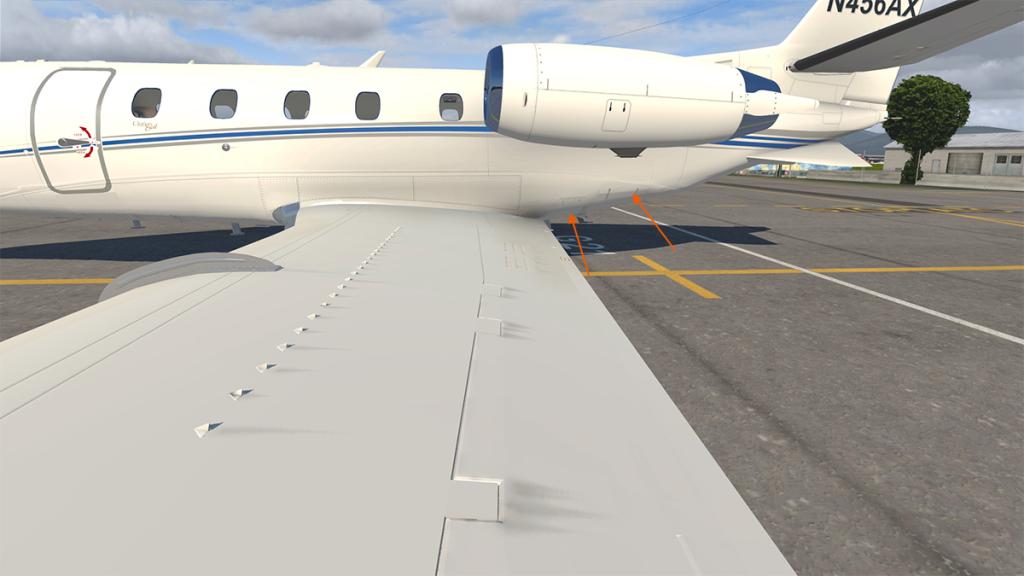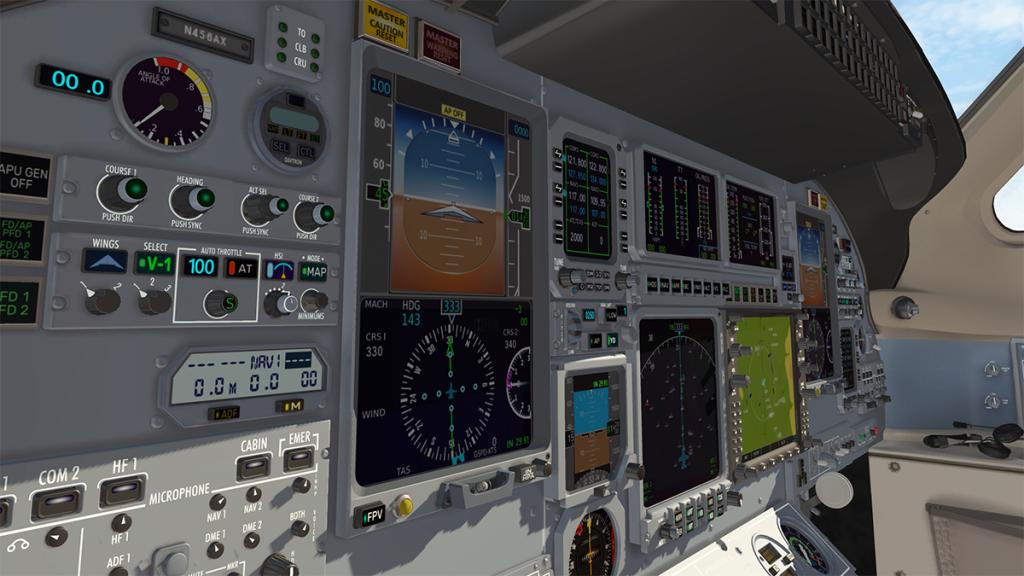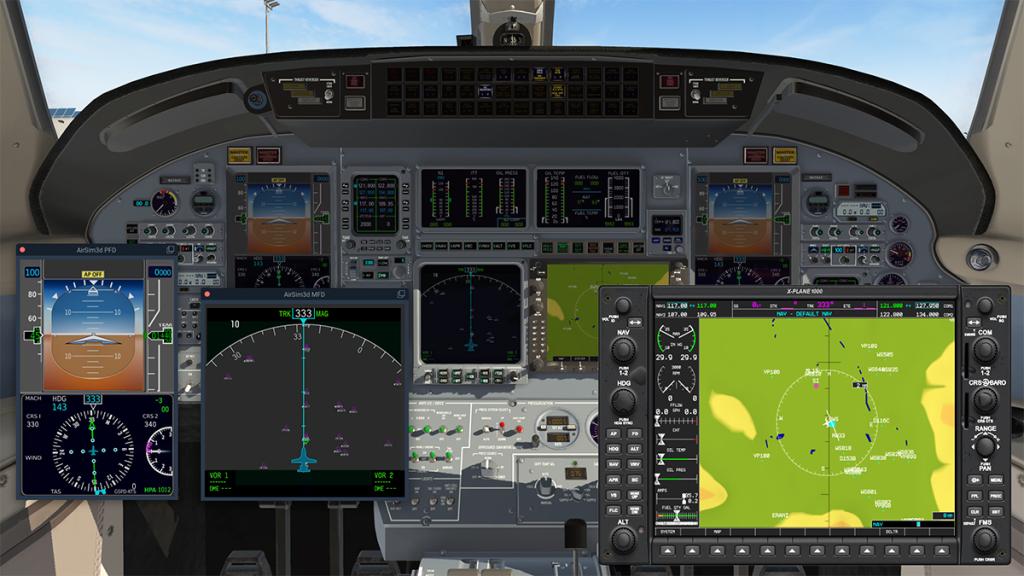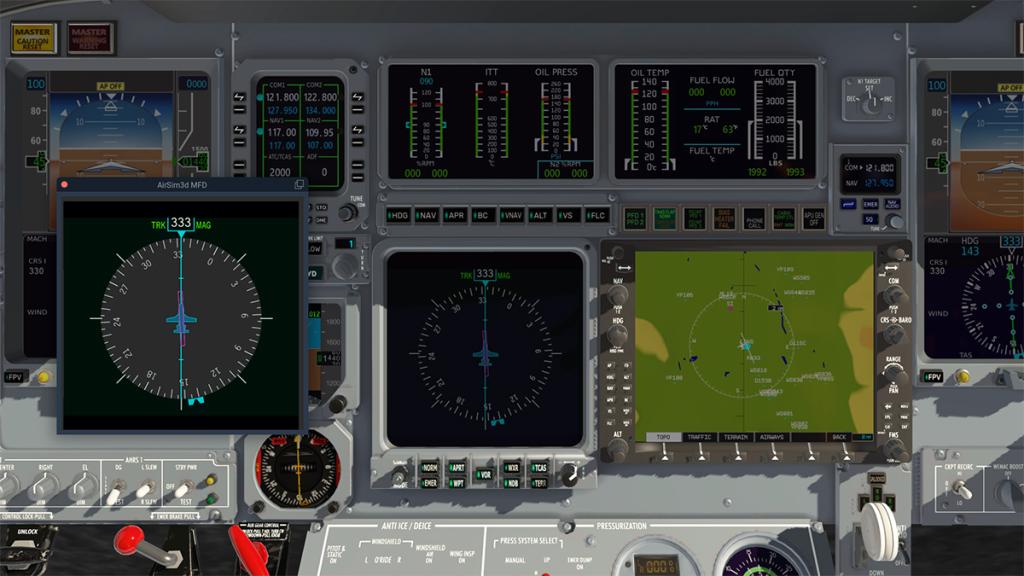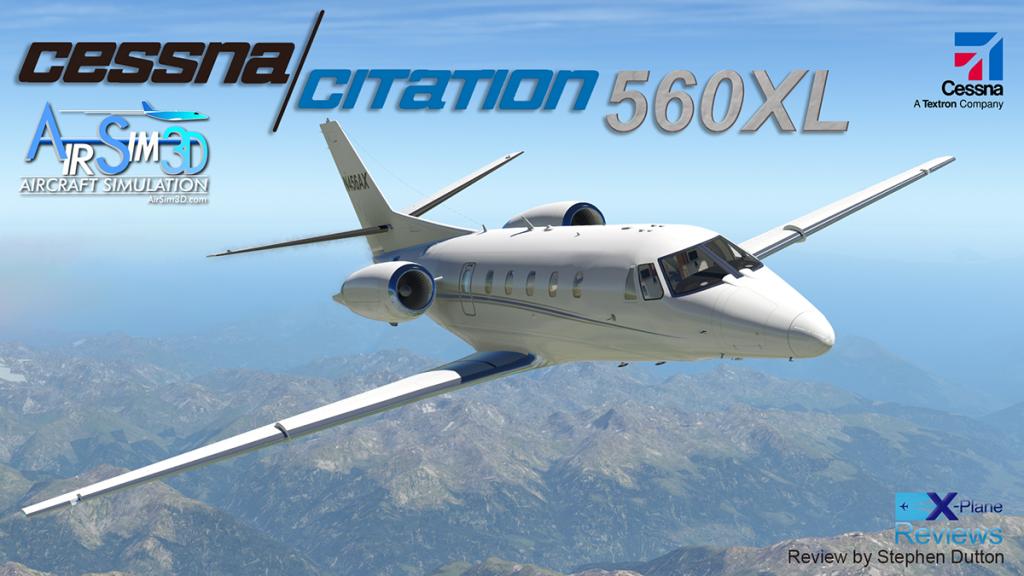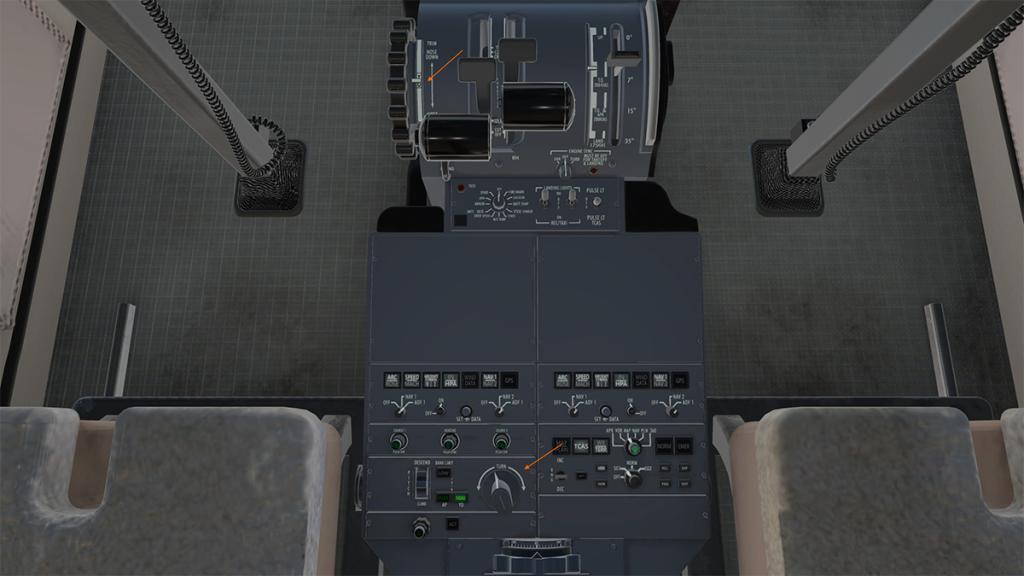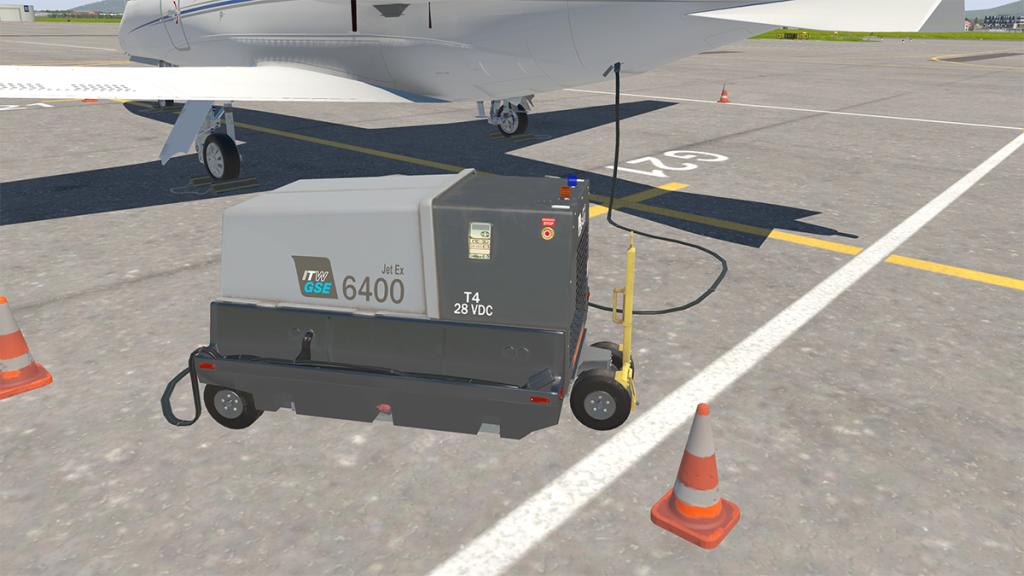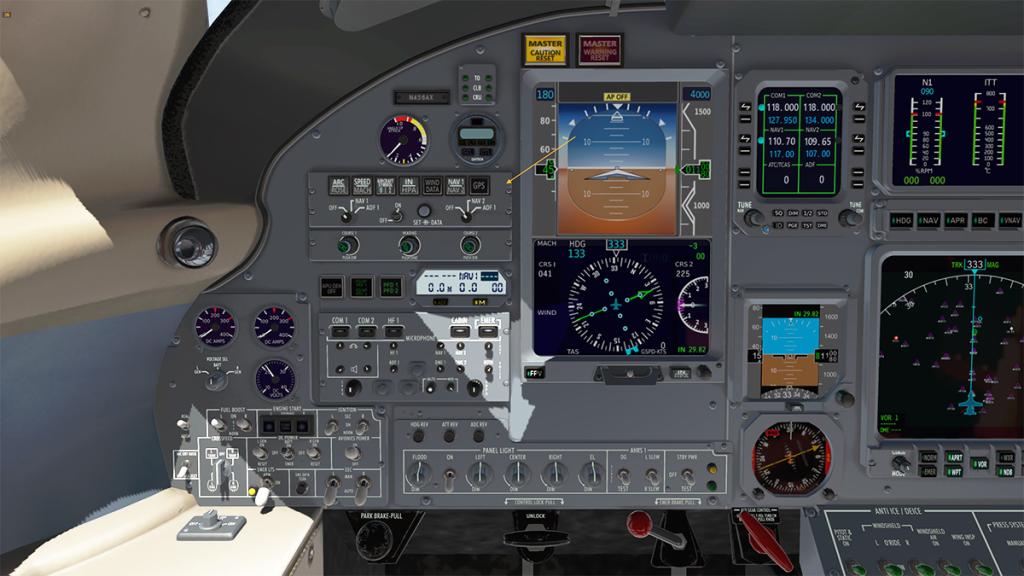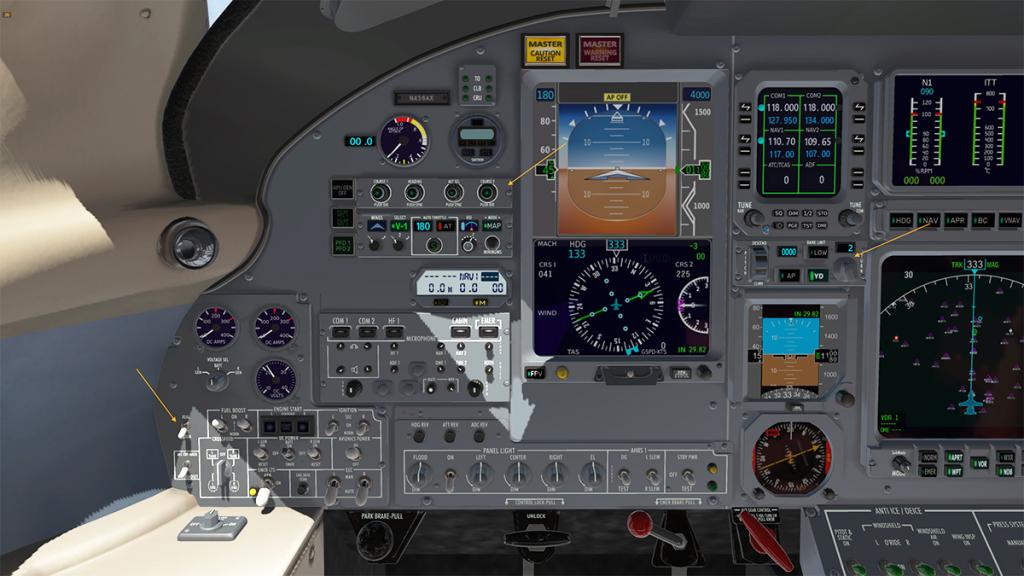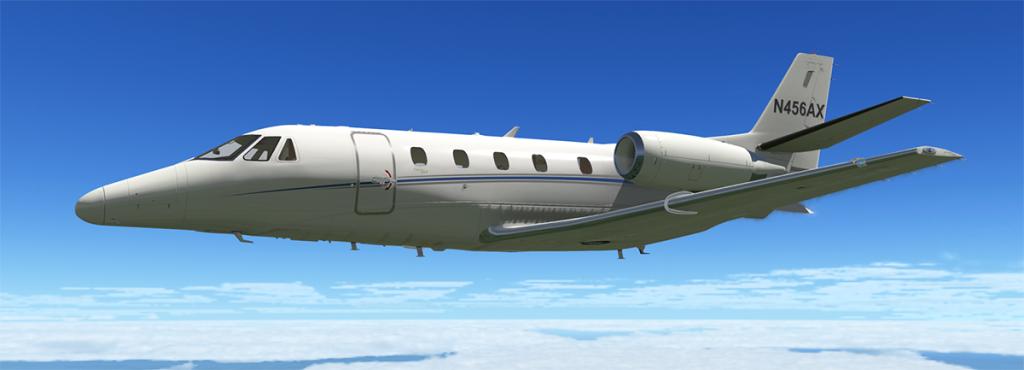Leaderboard
Popular Content
Showing content with the highest reputation on 11/18/22 in all areas
-
Aircraft Review : Cessna Citation 560XL by AirSim3d Within any family there are the odd branches, certainly in the families of very successful aviation aircraft and in this case it is the Cessna Citation family. The Citation is a very large and diverse line of successful business jets, but within that long line, there is always a compromise aircraft to fit into a certain aircraft market segment. The problem is with a successful family is that the next aircraft in the series has to be better, faster, bigger and have a longer range. But that also puts the aircraft out of reach to a certain lower segment of purchasers, so you have to diverse the order to create a product for that particular segment. So rather than being a direct variant of another Citation airframe, the Excel series was created to be a combination of new technologies and designs. To produce the Excel, Cessna took the X's wide, stand-up cabin fuselage, shortened it by about 2 feet (0.61 m) and mated it with an unswept wing utilizing a supercritical airfoil (based on the Citation V Ultra's wing) and used the tail from the Citation V. The Excel has the roomiest cabin in its class of light corporate jets and can seat up to 10 passengers (in high-density configuration; typically the number is six to eight in a corporate configuration), while being flown by a crew of two. The Excel has a 2,100 nmi-range (3,900 km), 20,200 lb (9,200 kg) MTOW, and the jet is powered by two 3,650–4,080 lbf (16.2–18.1 kN) PW545B turbofans, and the XL variant first flew in 1998. If you go back a decade, there was virtually no Business Jets in the X-Plane Simulator. DDEN's Challenger 300 changed all that, and lately there has been a flurry of Private/Business Jets now of all sizes, except the really big transcontinental machines, the Aerobask Dassault Aviation's Falcon 8X is still in development, but the Gulfstream 550 was released last month. For Citations there are a load of them. There is the Citation CJ4 Proline21 by Netavio, Carenado Cessna Citation ll S550 and the Citation X coming as a default aircraft in X-Plane 12. But no Excel Citations. This AirSim3d Cessna Citation 560XL is currently only being released in X-Plane 11, X-Plane 12 compatibility will come after X-Plane 12 goes final. AirSim3d are a new developer to the X-Plane Simulator and a very welcome one. As we will see this is a very impressive debut aircraft, but still a new debut aircraft from a first time developer. So you have to, and as I have done in the review is don't expect the absolute extreme of say Aerobask quality. But as noted for a first release it is extremely impressive and I have also been very impressed with Mark Eduljee's (developer) responses and quick fixes, which is all you need for a good developer. This is a nicely sized Business Jet. Not too small or short, or too large to be cumbersome, I really like the look and feel of the machine. The Citation distinctive wing has a slight dihedral, while the tailplane had a steeper dihedral. Flight control surfaces were conventional: ailerons, one-piece flaps, elevators, rudder, and trim tabs. All the flight control surfaces were manually actuated, except for electrically-driven flaps, and an electrically-driven elevator trim tab. There was also a hydraulically-operated grid speed brake on top of each wing. Detail is very good, your not going to get exceptional at this level, but the modeling and the detail is quite impressive here. You see and feel the construction of the C-560XL. Panels access panels and the highlighted (Dot3 bump mapping) riveting is well done, There are a few drawn lines, but nothing to worry about, the excellent tail and rudder assembly is the highlight. All VHF and UHF antennas are present and correctly done. The Excel has two PW500 turbofans, this version is the PW545B, which has an additional LP turbine stage to drive a larger diameter fan. So the maw engine inlet on the engine pod is quite large. There are also two large can thrust-reversers on the exhaust outlet. Overall the engine pods are very well done with the chrome inlet a very nice piece of work, note the small but detailed inlet fire sensor. Glass is very nice and a smoky grey in colour, and has nice reflections and opacity. The original glass in the early beta's had a red tint, a reflection of the internal wood, but it didn't work in my eyes, good idea, but in theory and practise this grey is far better and realistic. Citation wings have two stage grid airbrakes, and they look sensational here in operation. Cord and wing detail is good, but not absolutely top notch, the fine fillers of experience will eventually create these areas better, but it's still great work if not brilliant for a first project. Chrome leading edge are very nicely done, as are the wing details, with nice wear and well done wing vortex generators. Rear undercarriage is a trailing-link single wheel gear setup. The detail here is excellent, with a lot of complex detail and modeling, all links, arms and struts are really well done, but I am not sure of the brightly coloured hydraulic clips on the piping, there are quite bright, fine for a factory new aircraft, but for a working one? But you won't complain about the quality of detail here. Single nose-wheel is really well done as well, simple and with a nice chrome hydraulic strut. External Elements There are no menus with the C-560XL. To open or operate items you use the small arrows as selectors, most have a double click action. On the C-560XL there are external elements you can access and use. There are there doors lower rear left that is the Electrical panel and the Aft Baggage hold. As noted to use these arrows they can sometimes have a double operation, one to open, then one to do the operation. Here you can open the baggage hold door then secondly load or unload the internal baggage onto a waiting trolley. One arrow on the door opens it, then another arrow on the trolley loads (well fly through the air) the bags to stack on the trolley, use the up arrow on the trolley to reload the bags. Note the baggage door does not open cleanly, as the real door is also fiddly to open and close. In the electrical bay you can disconnect or connect up the battery power. GPU There is a small hatch rear of the baggage compartment, that is the GPU or Ground Power Unit connector. Again you select (arrow) once to open the hatch, then again to attach the power cable which makes the GPU unit appear which is very highly and nicely detailed. There is a small lid on the side to access the power unit control panel, to start and it also has a great "Emergency STOP" button that actually works. There are also wheel chocks and safety cones as static elements, engine inlet and outlet covers and "remove" pitot covers for detail. These elements are shown in steps of when the aircraft is powered down or cold with the power totally switched off. A detail I really like, but the engines covers are always on when with no engine power, but the aircraft still powered up, which is a bit odd. Internal Again to open or operate items you use the small arrows as selectors, like on the main door, called the "Aerostar" door. It is a bit tricky to use. You have to press the button to pop-out the handle, then use the arrows to open or lock the door, same in reverse. The cabin is "Lux", 7 seats and all executive. In an off cream club style seating, expensive wood paneling and thick pile carpets. The four club seats can be reclined via the lever on the arm rest... .... and the window blinds can be raised and lowered by the lever at the base. There is a rear washroom. You access the washroom, by opening the doors twice, once ¾ opening, then full, via the front handle and then the side knob. Bathroom is very classy, with a custom sink unit, and a toilet on the other side. Washroom blinds work as is the same in the cabin. Forward, there is a nice buffet/small galley left and a wardrobe right. Overall it is a very nice fitted out and usable cabin, however the glass tinting in areas would be better toned down a little. Cockpit First look and the cockpit doesn't feel as plush as the cabin. First thing to note is that this C-560XL is of the mid-90s era and the cockpit is configured and styled that way, but it feels slightly older in age and style. I'm not sure of the seats, one word certainly comes to mind is "uncomfortable", but I think the developer is having a rethink on the design. They are thin and narrow in this tight cockpit in the C-560XL, but I don't think so square in shape. They do however move forwards and backwards with moving armrests. Twin yokes are super lovely. They have a nice central metal casting with the "Excel" logo in the middle, and nicely worn arms. You hide them by pressing the area behind on the panel (arrowed). Electric Trim works on the yoke (arrows). Instrument Panel The Excel (original) uses the Honeywell Primus 1000 three-screen EFIS avionics package of two CRT Primary Flight Displays, one for each pilot, and an offset lower MultiFunction (MFD) display. I will be extremely honest with you. When I first saw this panel layout I really wasn't that taken to it. But after using it and being in front of the panel now for quite awhile, I now think it is extremely well done. It has a different feel and look certainly, and it also gives you the feeling it is a different and an authentic aircraft than the usual Business Jet, so once adjusted I really, really like it in here. The system uses a IC-615 Integrated Avionics Computer (IAC) that includes the Flight Guidance System (FGS) and the Electronic Flight Instrument System (EFIS) other systems include the AZ-950 Air Data System (ADS), Primus 880 Weather Radar, Attitude and Heading Reference System (AHRS) and the Primus II Radio System, but the Laminar G1000 has been customised to do the GPS/Flightplan role. PFD - Primary Flight Display. The Primus 1000 PFD is split with the Artificial Horizon top and the Horizontal Situation Indicator lower. Artificial Horizon, Speed and Altitude tapes, bank roll scale and roll pointer, Vertical Speed markers, Pitch markers, ILS bars and AOA (Angle of Attack) guide. Lower display is the COM1/COM2, ATC1, RAT ºC and UTC (Time). And there two styles of wings on the HSI. It is a complicated layout and study is required before flight to work out every separate knob or switch function, but many functions are doubled up. All three in; PFD (left) - MFD and GNS G1000 all pop-out for use. You can change the panel configuration from AUGM (modern AP) to REAL, or the original panel layout, which is the pilot right mid-console panel moved to the main Instrument Panel. The Engine management uses the AMLCD or "Active-Matrix Liquid Crystal Display in two units. Each engine is equipped with the following instruments displayed on the center instrument panel; Fan RPM (N1), Inter-Turbine Temperature (ITT), Turbine RPM (N2), Oil Pressure, Oil Temperature and Fuel Flow. Also shown in addition to the engine instruments are; Ram Air Temperature (RAT), Fuel Temperature and Fuel Quantity. MFD - Has four heading options, and Terrain Radar (Dr Gluck's Terrain Radar plugin required). Glareshield, there is a very large annunciator panel, also known in some aircraft as the Centralized Warning Panel (CWP) or Caution Advisory Panel (CAP). It has three warning states "Red" Warning, "Yellow" Caution and "White" Advisory/Indication. Thrust reverser states and over-ride are positioned on each end. Testing the CWP can be done via the switched at the rear of the Throttle pedestal, in fact all system lighting and signs can be checked from this system. It is a very comprehensive CWP. Large centre shelf console covers; Anti-Ice, Pressurization, and External lights switchgear, bottom right is a large "Temperature Panel" for the Cockpit and Cabin. Throttle Pedestal is excellent. There are twin-throttles wit built-in reverser levers, and lower fuel cut-off levers for each engine. Pitich Trim wheel left and Flap lever right (0º-7º-15º-35º). Engine Sync selector works. Lower panel has the System Test selector, Landing Lights and Pulse Light (Beacon) Side cockpit panels have the circuit breakers (fuses), but they don't work? Map Lights and on the Pilot's side, an AUX PANEL LIGHT. On the right panel is the same (no AUX light), but added is the APU (Auxiliary Power Unit) panel which is very well done. Lower pedestal is a selection panel for each pilot selections, mostly the same as on the panel itself, but more finger handy. Notable is the PITCH Trim (Electric) and TURN (This is an important knob which we will cover later). Then at the rear the large Rudder Trim knob. Flying the C560XL Engine startup is very authentic. The onboard APU provides power and bleed, start then wait until it is running at at 100%. It will tell you it's status. Fuel Cutoff's are under the throttles, but they can be tricky to switch with the small up/down arrows. Main start panel is over far left instrument panel, with the required "Fuel Boost" pumps ON, Ignition (always on) and engine starter buttons centre. Like most Citations there is "Full Authority Digital Engine Controller" or FADEC to start the PW500 turbofans. Startup sounds are excellent with a nice whine, and the engine sounds in the cockpit settle down to an excellent background hum. One thing I really liked is that you can set an N1 Thrust limit target on the AMLCD, by using the knob at the end of the panel. I use the word a lot, but it's important here, "Feel". This is an aircraft you have to feel and become one with. First it is a good idea to cover the systems and layouts before flying. As a lot of the switchgear actions are doubled up, so using the sets you are most comfortable with is important, and I found I liked adjustment panel directly left of the HSI the best. There are areas that you feel (that word again), still need a little fine tuning, certainly in the areas of power and braking, they are good now, but over time will become more or less urgent to make the machine even more supple and realistic. Keep the speed low to taxi, the 560XL has a very nice wide wheel spread, so she rides very nice and steady on the ground. Centred ready to fly, and you have to set the T/O Trim (wheel), but more importantly set the "TURN" trim on the rear console, if not centred the AP (Autopilot) will not activate in flight. You have to be super careful with the throttles, the PW545B creates a power of 4100 pounds of thrust at takeoff. So the Excel will literally takeoff from rest (hence the N1 Thrust target) and the careful power inputs required (weight dependent here at 8100 kg). Flap here is set at 5º for takeoff. I was shocked at the serious power for the first few times until I reined myself in and controlled it better. Rotate is around 200 knts, then once off the ground you can climb almost straight up, this Citation JUST GOES, up and up. It will (officially climb at 3,500 ft/min (17.78 m/s) and practically right off the rate of climb chart. When in the air you just really like this jet, yes again there are a few rough edges, but the core is excellent, great performance, great handling, great feel. And you very quickly tune into the machine. And a very nice looking machine in the air this is. Performance of the Excel is an empty weight of 12,800 lb (5,806 kg) and a Max takeoff weight of 20,200 lb (9,163 kg). Cruise speed is 441 kn (507 mph, 816 km/h) true airspeed, at 45,000 ft (13,716 m), with a range of 1,858 nmi (2,138 mi, 3,441 km). Lighting Lighting is excellent, but could still be noted as a work in progress. Externally you have two landing lights under the belly of the XL, taxi lights in the wings and navigation lights in the wingtips and tail. There is tail lighting and a red beacon top... A note on the landing lights is that you can make them "Pulse" from one to the other... At a certain setting, the cockpit feels very military or even fighter jet in feel, and yes I really love it. There is adjustment for panel dropdown lighting, left, right and centre lighting, You can get an almost all black instrument panel, but with a background feel... an oddity is the panel light switch (lower bottom left panel) is the opposite way around in highlighting the instruments, OFF for on, and ON for off? .... there are side panel lighting, and also two overhead spotlights that can be positioned (animated). The same animated spotlights are also above every seat in the rear cabin, again a very nice place to be at night, with some lovely subtle lights. But overall you still feel it all needs a bit of fine tuning, like the EXIT lights are too bright, and spots not showing their sources enough. But overall the Citation is a very nice place to be in the dark. Currently you still have the the Laminar default G1000 unit in the aircraft, but it is customised to a point, and it works and even looks good (yes it pops out). The dreaded red line is still used on the MFD, but I expect that to be upgraded in X-Plane12, as these areas have all been redone with better scale, notes say that a custom Flight Management System will come later with the aircraft, but not in this version. Notable is the excellent (easy to use) AP (Autopilot system), you can adjust from the panel or from the lower rear console and it feels very authentic to use. You don't get a full clear or blank Centralized Warning Panel, mostly Yellow caution lights are always flashing away, and that aspect can be a bit distracting in flight, but again it is very good. The style and feel of the instrument panel is highly debatable. I will be honest, I particularly didn't like it at first as noted earlier? But having flown the Excel a lot over the past month, I now really love it, even miss it a lot when flying other aircraft as it is quite authentic to the real 560XL design. You also have the choice of "Wings" in the HSI, bent or straight, personally I found the straight version easier to see and use, and selection is via the HSI side panel. Sounds overall are very good, push the throttles and there is a nice roar from the PW545B engines which I really like, they are from samples of recordings from the real Citation jet at Boeing Field. Internally all Warnings, Call outs, Clicks, Beeps, airflow, in/out, sound modulation are all included, and this is a very clickable (noisy) cockpit if you like noisy switchgear. APU sounds externally and internally are all very realistic. In the air internally the 560XL is a quiet aircraft, those engines are way back from your ears, but there is still a lot of the required feedback with any engine throttle adjustments, so sounds are a highlight of the aircraft. The aircraft is slippery, so you need those airbrakes to control your descent, they look great operational from the cabin windows as well. That straight clean Citation wing with the wide track wheels is a very stable platform when configured for landing. You feel totally under control and have a very nice balance on the final approach, as long as you have prepared the trims correctly for the landing phase. Approach speeds are quite low (Full 35º Flap) at around 130 knts, but thankfully very stable at that speed. Slowly you reduce your speed to around 120 knts to reduce your height... With a touchdown (nice slight nose up flare) of about 105 knts, which is pretty slow for a jet, notable to be very level on landing, if not the wide track will bounce you from the the left or right wheel... I do recommend (pedal) toe-brakes with this 560XL, keeping the aircraft straight is tricky without them, yes it can be done, but the dancing footwork is far easier for ultimate control, then for the final braking. Opening and closing the clam reversers is a double action, press once to arm, then again to activate, the stopping reverse thrust is effective, even impressive. Liveries There are nine liveries, N456AX (is default) and the rest have very decorative names, in order; Brazilian Carnival, Indian Summer, Italian Classic, NZ Fern, Spanish Treasure, Swiss Snowstorm, UK Red Ribbon and US "Singing the Blues". Paintkit is also available. ____________________ Summary The Cessna Citation 560XL (Excel) is an off-shoot from the main Cessna Citation family to fit a certain niche in the market. It uses several combination of new technologies and designs and the sections of other Citations, but the Excel creates a more bigger cabin, bigger engines, but it is a smaller aircraft overall with a lower range to create a lower market price or entry level aircraft to the family. AirSim3d are a new developer to the X-Plane Simulator and a very welcome one. As we have see this is a very impressive debut aircraft, but still a new debut aircraft from a first time developer. So you have to, and as I have done in the review is to don't expect the absolute extreme of say ultra Aerobask quality. But as noted it is still very impressive. The Excel 560 is being only released currently for X-Plane 11, the X-Plane 12 version is currently in development and will follow when X-Plane 12 goes final. The word to say here is "Quirky". Not quirky in a odd or even a bad way, but different quirky if you have flown or have known other Citation aircraft. The C560XL is different, feels different and you use it differently. So the first impressions here are quite construing to your senses as it feels and looks to a different era. But use the Excel and fly it, then you begin to really enjoy it, savour it and in the end you will find it a very nice aircraft to use frequently, in fact you will want to fly it consistently as it is deep down a very good aircraft. Modeling is very good, as is the detail, but that word quirky will come up with the way you interact with the aircraft (arrow/pointers) and no menus. But you will soon click into the way the system works. That ultra shine is not however there, but everything else is including a nicely fitted out cabin with seat and window animation and nice lighting. Other features include Cones, Chocks, engine covers, Pitot covers, working GPU, battery hatch and a Baggage compartment that can load or unload bags at a click of an arrow. Business Jets have become a very popular of the last few years. Mostly because they perfectly fit that segment between General aviation flying and the larger Commerical jet aircraft. They are a pleasure machine with great performance and speed, so this AirSim3d fits that context perfectly. Also in the same context is the design and feel of the original Excel style aircraft. Once bitten you will love it, the 560XL certainly grows on more with every flight. It's not totally absolutely perfect, but for a first incarnation of an orginal design it is very good.... Recommended. ____________________ Yes! the Cessna Citation 560XL by AirSim3d is NOW available from the X-Plane.Org Store here: Cessna Citation 560XL Price is US$59.95 Features: AirSim3D C-560 XL: Real-Jet authenticity Real jet visits at Boeing airfield were extensively used to inform build and design decisions 100’s of pages of real POH manuals, specs, drawings, pics used Real pilot tested and extensively beta tested Result: real-world systems, lighting, functions, modeling and procedures authenticity Rich FMOD sounds Sample recordings from the real jet at Boeing Field Result: Custom Engine, APU, GPU, Warnings, Call outs, Clicks, Beeps, airflow, in/out, sound modulation...all included Example: AP disconnect – that's the actual sound real pilots hear! But not overdone: The real jet is quiet at cruise; AirSim3D’s C-560XL follows that model Summary: Win, Mac, Linux tested VR ready PBR materials and Occlusion shading everywhere Hi-fidelity cockpit and instrument objects Bump-texturing and grunge elevated to an art form Finely detailed 3D objects that match real world dimensions Sharp, authentic labeling and correctly placed across the whole aircraft Animations and their timing match the real jet to 99% 99% of instrument follows real-jet/POH/specs and requirements Over 90 total system warnings failures, and lights Exclusive THXp Lighting: 300+ tuned and directed lights make night flying spectacular! Exclusive Real and Augmented AP/AT instrument layout on demand FPS is comparable to similar popular jets and LR default aircraft Airfoil and Weight/CG modeling AirSim3D’s Specialty Glass; Reflections are subtle and don’t distract Real-jet conforming flight characteristics, Engine performance Exact Main Door operation (in or out) with custom step lighting Superior Gear, Flight surfaces, Engine blur modeling, animation, and texturing All Lights use light beams (not flat LIT 2D textures from paint programs) In/Out Emergency Lighting with custom over-wing “shark lights” Fully functional Lighting, Electrical, Start, Pressure, Radio, AP panels Functioning APU & GPU; start-up/refuel/charging procedures and sounds Authentic cold and dark startup/shut down Controls lock and Emergency brakes, Gear blow down functions Fully animated Cockpit, Cabin, Lav; Wizard-inspired baggage load/unload Grunge wear and tear everywhere -- elevated to an art form External attachments (chocks, cones, covers etc.) 8 custom, country-specific marked liveries + paint kit Pilot Operations Handbook online – always up to date Instrument Summary Authentic, fully functioning Annunciator panel * 90 + custom and lighted faults * 42 annunciators track L and R faults/sys status independently * Complete MC/MW integration Custom Auto Pilot fully integrated with the custom PFD, MFD, and G1000 * 9 functions: YD, HDG, NAV, APR, BC, VNAV, ALT, VS, FLC * On demand Realistic and Augmented AP panel layout modes * VVI, Bank angle, Low limiter * Custom Auto Throttle in Augmented panel mode * FMOD callouts Custom Collins-inspired PFD (pop up) * Custom AP status annunciator integration * Mach, ASI, VVI, HDG, CRS, WIND, TAS, GSPD, FPV, BARO. IMO markers * Authentic SPEED, ALT tapes (to -1500 AGL – now fly to the Dead sea airports with AP!) * Custom APR/DPT ASI flags * PFD 1, 2 source * Cat II ILS tested HSI * Custom art Artificial Horizon * Wind direction/speed * Ground speed * Kts/Mach selector * VOR 1, 2, GPS, ADF tracking * Speed and VVI prediction * 2 “wings” displays * 2 Flight Director modes * Custom artwork for real 3D look and feel * Custom AP and Speed tapes function to -1500 AGL * Automatic reference speeds displays for Gear, Flaps, Speed Custom MFD (pop up) * Weather and Terrain radar * Range selector (1-360 miles) * Standard HSI: Rose/Arc with ARPT, WPT, VOR, NDB, TCAS 6 MFD sub modes * APP, VOR, MAP, NAV, PLN * TCAS Alert call outs integrated with Pulse Landing lights * 14 Authentic all-flight phase checklists * 23 checklist sub modes Authentic Electrical system * Outside Battery disconnect (animated, functioning, lighted outside Panel) * Normal and Emergency battery instrument profiles * Amp/Volt gauges, source select, battery charge/discharge profiles * Gens/APU/GPU charging integration * Battery Over Temp * Interior and Master Battery disconnect with full systems/lights/avionics integration * Authentic Cockpit, Entry, and Cabin lighting Authentic and fully functional Lights panel * Day/night Switch * Dim-able EL lighting * Dim-able Flood, Map, Panel lighting * Independent L, C, R instrument stack dimming * Over 300 individually placed and tuned (real) lights (not images) Radios / DME / Clocks * 2 Custom Primus II RMU: Active + Stby: NAV 1, 2; COM 1, 2; ADF; XPNDR (with Mode C) * 2 Custom DME: Station ID, Distance-To, Time-To, Closure Speed, Mi/KM * 2 Custom Pilot/CP Clocks: (GMT, Local, reset Stopwatch, Auto-Flight Time recorder) Requirements X-Plane 11 Windows, Mac or Linux 4 GB VRAM Minimum - 8 GB+ VRAM Recommended Current Version: 1.0 (November 18th 2022) Installation and documents: download for the Cessna Citation 560XL is 355 Mb and the aircraft is deposited in the "General Aviation" X-Plane folder. Full Installation is 732 Mb (Includes noted liveries) Documents supplied are: On-Line details only currently available; Summary - AirSim3d Designed by AirSim3D Support forum for the C-560 XL _____________________ Aircraft Review by Stephen Dutton 18th November 2022 Copyright©2022: X-Plane Reviews Review System Specifications: Computer System: Windows - Intel Core i7 6700K CPU 4.00GHz / 64bit -32 Gb single 1067 Mhz DDR4 2133 - ASUS GeForce GTX 1080 8Gb - Samsung Evo M2 2TB SSD - Sound : Yamaha Speakers YST-M200SP Software: - Windows 11 - X-Plane 11.55 Plugins: Traffic Global - JustFlight-Traffic (X-Plane.OrgStore) US$52.99 : Global SFD plugin US$30.00 : Environment Engine by xEnviro US$69.90 : AviTab Plugin - Free Scenery or Aircraft - LOWS- Salzburg Airport W. A. Mozart v2 by Digital Design (X-Plane.OrgStore) US$19.50 - LFMN - Nice Cote d'Azur v2 by JustSim (X-Plane.OrgStore) US$18.50 (Disclaimer. All images and text in this review are the work and property of X-PlaneReviews, no sharing or copy of the content is allowed without consent from the author as per copyright conditions) All Rights Reserved1 point







